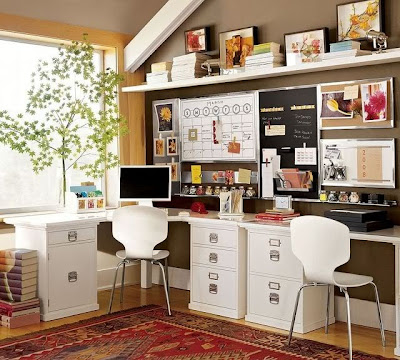To be a successful freelance graphic designer you have to want it, really want it! So do you have what it takes?
Here are a few questions to ask yourself to find out if freelancing is right for you.
1. WHY DO YOU WANT TO BE A FREELANCER?
Question your motives and answer honestly. You can make a great living as a freelancer but if you want to freelance for some easy big bucks you're in for a rude awakening. Without talent even a perfect business plan can only take you so far.
2. DO YOU HAVE THE DRIVE TO TURN YOUR SKILLS INTO A SUCCESS?
If you have a dream you must also have the desire for it to be fulfilled. If you have talent you must also have drive and motivation to generate income.
3. ARE YOU BUSINESS SAVVY?
If you have no idea how to run a business you may not want to jump into freelancing and try to learn as you go. It would be a good idea to read, research and maybe even take a small business workshop. See my post on "10 Steps to Starting a Home-Based Business as a Freelance Graphic Designer".
4. ARE YOU SELF DISCIPLINED?
You may be dreaming of being featured in your favorite design publication someday or becoming internationally recognized for a revolutionary design concept. However, everyday life is pretty different from that experience. While there is some glitter involved with the design industry there is also the plain ol' work that pays the bills. Some of that being grunt work. But, it's important to approach each project with a healthy, positive spirit no matter how big or small the job. Sometimes that grunt work can turn into a really nice gig if you provide good service and share your business savvy. Sometimes clients just don't realize the possibilities or realize your abilities. Keep selling yourself even after you've been sold!
5. ARE YOU DECISIVE?
As a freelancer you will have to balance many hats and make decisions on all aspects of your business. Remember you are the boss, the risk taker, the jack of all trades. This is your time, energy and money. If you fail it is in direct response to the big boss - you! So just keep in mind that you will be responsible for keeping the business up and running, this includes bringing in new work, managing your bookkeeping and invoicing and keeping up to date with the industry.
6. CAN YOU TOLERATE REJECTION?
Rejection is part of life as a freelance designer, knowing not to take it personally is key. Clients, art directors, or whoever is making the decisions on the project is thinking, "Can I sell this product with this art?" or "Will I get my point across with this photo?". There are many reasons your work may be rejected. The important thing to remember is that rejection is the downside of an isolated opinion and preference. You can't let rejection interfere with your confidence in your abilities. Stay calm and move on!
7. CAN YOU THRIVE ON COMPETITION?
There's a creative army out there in full-force and they're skilled, talented and hard-working. They're your competition - use this as your motivation. Keep your eyes wide open and know what's going on in the industry. Don't be a rubber stamp, know the trends and keep an edge. Clients don't want someone who simply knows how to use Photoshop to throw their logo on a stock image. They want someone who can think, bring new ideas to the table. Show that you're paying attention to how they're business works and how it can be better.
8. CAN YOU ROLL WITH THE PUNCHES?
How do you handle stress? Are you described as having grace under pressure or do you rattle like nuts in a jar when pressure builds? If you get a little nutty you may be in trouble. Freelancing can be stressful in many different ways, from work getting a bit slow or even a bit much, or money being tight, client issues, or it may be stress from the balancing act of home life and work life. As people in general we all struggle with stress what's different is how we deal with it. Meditate. Jog. Bake an apple pie. Just find what works for you. Freelancing is a stressful career but very rewarding!
MY THOUGHTS: "When I start to get overwhelmed with deadlines (or lack of deadlines) I get out of the house. Whether it be going out for lunch, going for a walk around the neighborhood or exploring local boutiques. You'd be surprised at how well these things can get you back in the groove and get your creativity flowing again." –LML
9. HOW'S THE PIGGY BANK?
Like I mentioned in my previous post, "Step 7 of 10 Start A Savings", you should have a savings set aside for those times that business is slow or when you're just starting out. Consider freelancing on the side of your full-time job to build up a savings. It's best to have a reserve of at least 3 months, more if possible.
10. CAN YOU SELL YOURSELF?
Aside from the business and creative responsibilities this is a sales job. You have to be able to sell yourself and your services to generate an income. As a graphic designer your job is to help businesses grow by selling more products, gaining more customers, etc. You'll need to do the same for your own business by having an identity package, a website, a tagline, a sales pitch - nothing cheesy. What I mean is you'll need to market yourself and your services as any other business would. Luckily you'll save money since it's what you specialize in!








